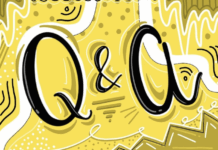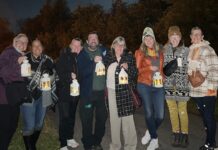
In the intense landscape of Palestine-Israel relations, certain terms become lightning rods, sparking heated debates and often, deep misunderstandings. One such term is intifada.
For many, the word conjures images of violence and unrest, often through a lens that casts Palestinians in a detrimental light. But as a Jewish person who has always been committed to social justice and understanding, I believe it is crucial to demystify and contextualize this term.
We must challenge the notion that intifada is an inherently negative word or a term of violence.
Demystifying the term
The Arabic word “intifada” translates to “uprising” or “shaking off.” Historically, it’s been used to describe periods of a community’s significant resistance against oppressive regimes.
The first time the word was used was in 1952 during the Iraqi Intifada, which started when port workers went on strike in Basra to protest against the Anglo-Iraqi Treaty, and, more generally, the ruling Hashemite monarchy.
Since then, the term has described a number of movements, including the March Intifada in Bahrain (1965), the Zemla Intifada in Western Sahara (1970) and the Egyptian Intifada (1984).
One of the more significant uprisings to use the word was the February 6 Intifada (1984). The people of West Beirut protested against the May 17 agreement of 1983, and eventually managed to end Israeli and American influence within Lebanon.
The two Palestinian intifadas were marked by widespread civil disobedience and protests. While there were slight periods of violence during both uprisings, reducing these deeply human struggles to mere acts of terror is to ignore the broader context of occupation, oppression and the right to self-determination.
The Palestinian uprisings
The First Intifada, which began in 1987, was fuelled by a collective frustration within Palestinian civil society against the nearly 20-year Israeli military occupation of the West Bank, Gaza Strip and East Jerusalem.
These protests were marked by acts of civil disobedience including graffiti, barricading and stone-throwing, as well as general strikes, boycotts and refusal to work in Israeli settlements.
In response to this, the Israeli army deployed 80,000 uniformed soldiers, swiftly resorting to using live ammunition against the peaceful protesters, drawing condemnation from several international organizations.
According to B’Tselem, the Israeli Information Center for Human Rights in the Occupied Territories, during the whole six-year intifada, the Israeli army murdered at least 1,376 Palestinians, 281 of which were children. In contrast, 94 Israelis were killed, four of which were children.
The Second Intifada, also known as the Al-Aqsa Intifada, erupted in 2000.
One of the most significant events that led to the uprisings was the built-up frustration of the Palestinians, who, under the Oslo Agreements, were promised an independent state by 1999.
Instead, the Israeli government accelerated its citizens’ illegal presence in the occupied Palestinian territories. In the decade preceding the Al-Aqsa Intifada, Israel doubled the number of illegal settlers in these regions from approximately 200,000 to 400,000.
Unlike the First Intifada, this uprising saw a significant increase in militarized resistance and armed confrontations, reflecting the heightened frustration and disillusionment of the Palestinian people.
However, several scholars and analysts have noted that it was actually Israel’s excessive use of force which turned the popular resistance intifada into an armed rebellion.
Hani al-Masri, director general of Masarat, the Palestinian Center for Policy Research and Strategic Studies, explains “the level of Israeli aggression and losses on the Palestinian side didn’t allow the non-violent nature of the Palestinian Intifada to be maintained.”
Parallels in our struggles: the Jewish intifadas
From a Jewish perspective, particularly one informed by the values of justice and historical self-awareness, it is essential to recognize the parallels in our own history. The Jewish people have experienced their own uprisings and revolts throughout history, from the Maccabean Revolt to the Warsaw Ghetto Uprising.
These acts of resistance were responses to oppressive regimes, efforts to reclaim dignity and demands for autonomy. They were not always peaceful.
During the Holocaust especially, Jews in the Białystok Ghetto and the Treblinka Concentration Camp, for instance, set buildings on fire, used Molotov cocktails and bottles filled with acid, exploded a petrol tank and stole weapons to resist the Nazi occupation.
To condemn the Palestinian intifadas without understanding their roots in a similar quest for freedom is to selectively apply the lessons of our past.
Contextualizing Palestinian resistance is crucial for understanding ‘intifada’
Viewing intifada as a term of violence negates the legitimate grievances and aspirations of the Palestinians. It frames their resistance as unjustified aggression, rather than as a response to decades of systemic inequality and dispossession. Scholars have described the containment of Palestinians in Gaza as akin to a concentration camp.
Since October 2023, the severity of the military measures imposed by Israel resembles some of the darkest chapters of history, including the Holocaust. Palestinians in Gaza are now being kept in an extermination camp with no way of escape.
More than 39,653 Palestinians are confirmed to have been murdered, with tens of thousands estimated to be buried alive under the rubble. Gaza has also been declared a polio epidemic zone. Hundreds of thousands of cases of acute respiratory illness, acute watery diarrhea and acute Jaundice syndrome have been reported.
Eighty per cent of schools have been destroyed, including all 12 universities. Twenty of Gaza’s 36 hospitals are rendered inoperable, with the rest operating only at partial capacity.
But even before the escalation of tensions in October, Save the Children noted that 2023 was set to be the deadliest year recorded for Palestinian children in the West Bank.
In late February 2023, more than 300 Israeli settlers rampaged the town of Huwara and set buildings, cars and schools on fire, causing over 390 injuries in what has been described as nothing less than a pogrom.
In June 2023, Israeli settlers, again, carried out violent pogroms on over 12 Palestinian villages in the West Bank.
In July, the Israeli military raided Jenin hospital, bombed Jenin refugee camp and shot at journalists — all war crimes, according to UN experts.
To say that Palestinians should remain silent under such attacks is to ignore the fundamental human rights to resistance against oppression and a life of dignity. It perpetuates a narrative that dehumanizes and isolates them, effectively erasing their voices and experiences from the broader conversation.
‘Intifada’ as a flashpoint for discourse at Carleton
As the president of Independent Jewish Voices at Carleton University, I am constantly engaged in conversations about justice, equality and the need for a deeper understanding of the 100-year history of Palestine.
Within our own campus community, the term intifada has frequently sparked intense emotions and heated discussions. But almost always, it seems as though these reactions come from individuals who may not fully grasp its true meaning.
I’ve witnessed both advocacy for and pushback against the use of intifada in campus discourse. During various events, workshops and meetings, including those held by groups on campus and at the former University of Ottawa Palestine solidarity encampment, the term has been a focal point of contention.
Many students and faculty members express a desire to understand the historical and cultural significance of intifada, while others react strongly due to preconceived notions shaped by media portrayals and political rhetoric.
On several occasions, student groups have been intimidated and harassed for hosting events or posting educational content to their social media that mention the term. The most common excuse is because of complaints received from the Carleton community.
There is a pressing need for the university administration to reject divisive tactics and instead focus on fostering genuine dialogue and understanding. It is unacceptable for university representatives to legitimize these complaints, which do nothing but divide our campus.
Intifada, in its essence, is a call for justice. It is a people’s cry against oppression, a demand for rights and recognition. It is not a threat of violence, but a testament to the enduring human spirit that refuses to accept subjugation.
Regardless of our identity, we as humans have a moral obligation to listen, understand and stand in solidarity with all who seek justice, even when their struggle is not our own.
The path to real and sustained peace in Southwest Asia is full of challenges, but it begins with acknowledging the humanity of all parties involved. It requires us to move beyond simplistic labels and to engage with the deeper realities of occupation, resistance and the universal quest for dignity.
By reframing our understanding of terms like intifada, we take a step toward a more just and empathetic conversation: one that recognizes the legitimacy of Palestinian aspirations and the possibility of a future.
The term intifada should not be feared or demonized. It should be understood in its full historical and human context. Only then can we hope to build a foundation for peace that honours the struggles and aspirations of all peoples involved.
Featured image by Elissa Mendes.





